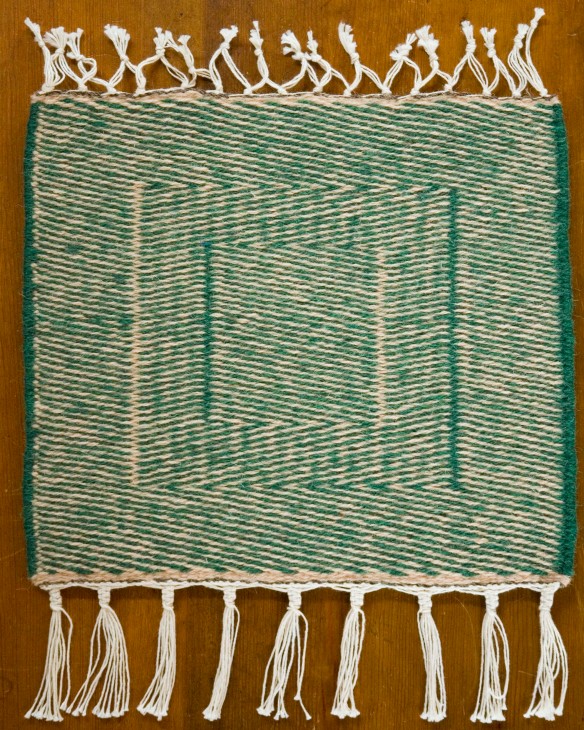It’s been a hectic winter involving lots of traveling, new equipment, and family business. But I’m finally back home for a while and ready to get to work.
In the studio, I spent the winter trying out a few new weaving techniques. These are techniques I had read about, but never got around actually using. So I created a series of small sample rugs. Samples are nice because you can try out different weave structures or designs without committing to a full-blown work. Though they should be fairly quick to complete, my samples took me almost as long as complete rugs.
I’ve done samples in the past and it was usually random – try this color, now that one, then a different pattern, and move on once I get the idea. I would also tend to use colors and yarn I don’t like much, figuring that they weren’t much use otherwise. The result was usually not that attractive – random patterns and ugly color combinations. This time I was determined to make something I can use for inspiration, hang on the wall, or just show off. I planned out each miniature rug as a stand-alone piece and ended up with some rather nice little samples.
For all of these samples, my resources were Peter Collingwood’s “The Techniques of Rug Weaving” and “Rug Weaving Techniques: Beyond the Basics”.
The first sample involves what is called crossed wefts. It has to do with the order of the different weft colors and how they change in the middle of the piece. The technique allows the weaver to, among other things, weave horizontal and vertical stripes side by side. In this particular variation, there are limitations to what can be done, which I discovered only after I began. I tried out some different braids for this sample, too.
 The second sample used a similar technique, but a variation that allows a little more flexibility. In this example, I created two different styles of dotted patterns.
The second sample used a similar technique, but a variation that allows a little more flexibility. In this example, I created two different styles of dotted patterns.

The third sample uses a method called compensated inlay. It is not quite a tapestry technique, but is sometimes used in tapestry work, if that makes sense. One of the features of this technique that I particularly like is the ridge that runs along the left side of the design pattern. The reverse side of the sample looks the same, but without the ridge.

The first three samples are all plain weave. The last sample is a twill weave that provides a different set of design possibilities. This is not my design – it is pretty much straight from Collingwood’s book. But I really like the three-dimensional effect.

Up next: A second set of samples yielded one interesting piece – I’ll share once it’s all tidied up.
